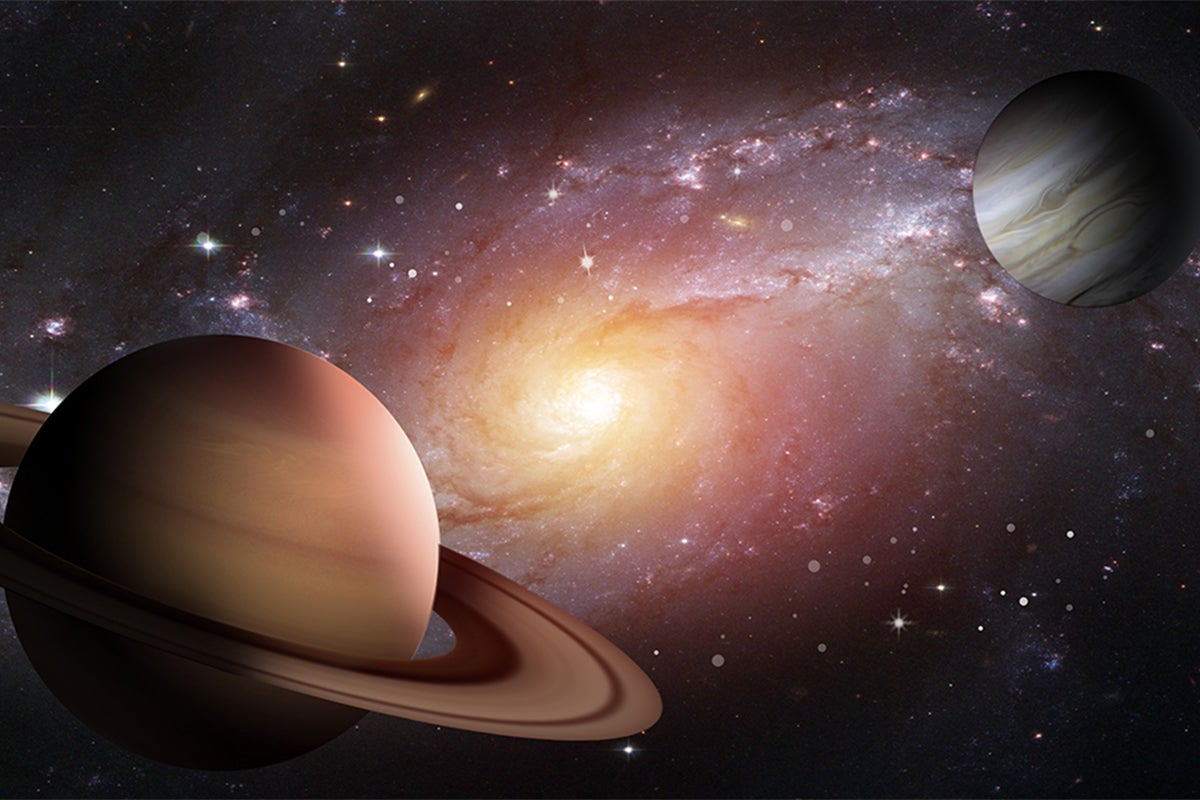Stargazers are in for a very rare treat on Monday. If the clouds cooperate, they’ll be able to see the “Bethlehem Star” — an event that hasn’t been seen in about 800 years.
The moniker applies to the Christian description of the “Bethlehem” or “Christmas Star” that was said to have appeared in the night sky at the birth of Jesus Christ. But for the moment it refers to the lining up of the planets Jupiter and Saturn, which from Earth’s perspective will appear almost like one very bright star on Monday, Dec. 21.
“It’s pretty rare for Jupiter and Saturn to get as close as that in the sky. Every 20 years they are sort-of close when Jupiter passes Saturn in the sky, but every so often at one of those passages they get really close, like what’ll happen on Monday,” says Yan Fernandez, a professor of physics and astronomy at UCF and director of the Robinson Observatory.
The gap between Jupiter and Saturn on Monday evening will be just a fraction of the width of the full moon. The planets won’t blend into one, but they will come close enough to make for a spectacular view, either with the naked-eye or through binoculars or a telescope. You will need to look low in the southwestern part of the sky soon after sunset to catch the pair.
Fernandez says December is already a great month for stargazing. The Geminid meteor shower arrived last week, Mars tops the sky all month, and the famous winter constellations – such as Orion, Taurus, and Canis Major – with their many bright stars are spread across the eastern sky in the evening.
The Geminid meteor shower occur every December, but it peaked in the wee hours of Dec. 13-14 this year. This is when meteors dance across the sky and appear like white fast streaks of light originating from a common place in the sky, in this case the constellation Gemini. During its peak you can observe up to 50 meteors per hour, assuming there are no clouds and the light pollution is minimal. Even those without a telescope or binoculars can see these meteors, and in fact optical aids are pretty much useless because the meteors appear so quickly and in any part of the sky.
Mars also appears as a bright orange light all month long. It is high overhead soon after sunset and is one of the brightest objects in the night sky right now. And it will be a fixture of our evening sky for months to come.
If you live in an area that has just too much light pollution, you can also check out pictures online. One of the images you’ll find on the National Science Foundation’s NOIRLab website is that of the unusual centaur P/2019 LD2 (ATLAS), also known as LD2. A centaur is a solar system object that behaves like a comet and an asteroid. Centaurs are fast-moving icy objects with unstable orbits found between Jupiter and Neptune.
A team of UCF researchers is responsible for capturing the image and publishing a journal article about it, which was featured in The New York Times earlier this month. The image captures the centaur during its transition to a comet.
The UCF team members include Fernandez, as well as Florida Space Institute post-doctoral researcher Charles Schambeau and Planetary Scientist Maria Womack.




